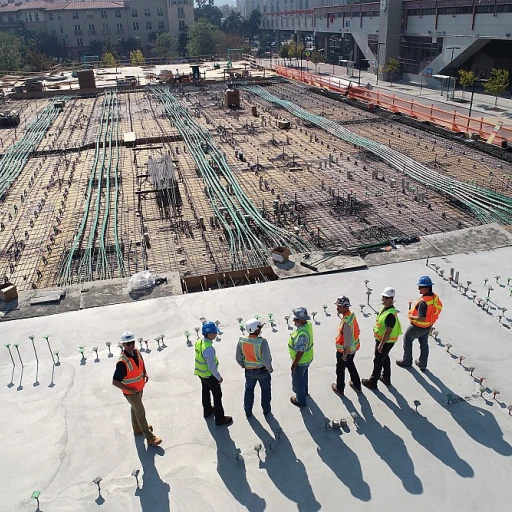
Understanding the Role of a Technical Trainer
Defining the Responsibilities and Challenges
Technical trainers play a crucial role in fostering the professional development of employees, focusing on enhancing their technical skills and overall performance. To create a meaningful impact, trainers must clearly understand their primary responsibilities, which are often multifaceted and demanding. Technical trainers are tasked with not only delivering effective training programs but also constantly engaging with team members to identify their specific development needs. This deep involvement helps to tailor training programs that are both relevant and impactful in the long term. Trainers are encouraged to set specific, measurable, attainable, relevant, and time-bound (SMART) goals as a framework for successful performance management. Moreover, in this competitive environment, it is imperative for trainers to align their development goals with organizational objectives, ensuring that both individual and company growth go hand in hand. This strategy is crucial when setting professional goals, as it ensures that training aligns with larger business strategies, enhancing the productivity and performance of the entire workforce. it’s important to consider effective strategies that will aid in achieving these training goals. As trainers focus on performance goals, they should continuously improve their own soft skills, such as communication and problem-solving, which are essential in coaching employees efficiently. This ongoing development aids trainers in setting a strong example for team members, encouraging them to pursue their own training goals actively. In essence, understanding the intricate role of a technical trainer lays the foundation not only for personal growth but also for the advancement and success of the team, leading to an improved onboarding and employee development journey.Aligning Goals with Organizational Objectives
Aligning Professional Goals with Company Vision
In the context of goal setting, it is crucial for technical trainers to ensure their goals are in alignment with organizational objectives. This alignment aids not only in individual professional development but also in the broader success of the team and the organization as a whole. The primary aim is to bridge the gap between personal aspirations and company needs, fostering a productive environment where both the trainer and the organization thrive. To begin with, it’s important to define specific smart goals that correspond to both short term and long term objectives. These smart goals serve as a roadmap for trainers to effectively plan and implement training programs, while addressing any immediate and evolving skill gaps within the team.- Understanding Organizational Needs: Before setting personal training goals, trainers need to grasp the organizational vision and how their role contributes. Engage with management to identify training needs that align with the company’s long-term strategies.
- Setting Goals Tailored to Development: Once the organizational objectives are clear, trainers must focus on setting development goals that enhance both technical skills and soft skills. This dual approach ensures that the training programs are comprehensive and cater to all aspects of employee growth.
- Integration with Performance Management: Incorporating training goals into the performance management system can further enhance accountability. This integration helps measure success in a structured manner, facilitating continuous improvement in training efficacy.
Developing Effective Training Programs
Crafting Engaging and Impactful Instructional Methods
Creating an effective training program is central to the role of a technical trainer. It's about striking a balance between foundational technical skills while enhancing problem-solving and decision-making skills. When developing these programs, the key is to consider how these will serve both short-term and long-term professional development goals. First, understanding the needs and goals of both the organization and its employees is crucial. These needs often stem from aligning the program with organizational objectives, where the trainer must consider how specific skills relate to overall business goals. By structuring training content around both technical and soft skills, trainers set a framework that allows employees to not only meet their immediate job requirements but also grow professionally in terms of problem-solving and decision-making. Trainers can use SMART goals to help structure their instruction for maximum effectiveness. Setting specific, measurable, achievable, relevant, and time-bound goals enables both trainers and trainees to understand performance expectations clearly. This also allows trainers to adjust their methods in response to team feedback, ensuring continuous improvement in training delivery. An effective training program also relies heavily on the ability of trainers to motivate and engage their team members. Facilitating interactive sessions rather than lecture-heavy approaches can help in better retention of technical content. Utilizing a variety of instructional methods, including hands-on workshops and e-learning modules, caters to different learning styles and keeps the content dynamic. Ultimately, adapting training to fit evolving technical landscapes and organizational shifts ensures that the programs remain relevant and valuable beyond initial onboarding. This flexibility contributes significantly to professional development by keeping skills current and applicable, thereby boosting overall team performance and productivity. For further insights on crafting engaging onboarding programs, you may refer to enhancing employee integration with e-induction, which sheds light on modern training approaches that can complement your training efforts.Enhancing Communication Skills
Advancing Communication Abilities
In the field of technical training, effective communication is paramount to successfully convey complex information. Trainers need to develop both verbal and non-verbal communication skills to address the varied needs of a diverse team. Clear communication aids in setting goals, whether they are short term or long term, ensuring that employees understand specific objectives and expectations. Improving communication skills is a key part of a trainer's professional development journey. Here are some strategies for enhancing communication:- Active Listening: Paying attention to what team members are saying improves interactions and informs better decision making.
- Simple Language: Avoiding jargon helps facilitate clearer understanding among all employees, irrespective of their technical skills.
- Feedback: Encouraging feedback allows for growth and demonstrates a willingness to adjust training programs.
- Presentation Skills: Effective use of visual aids and engaging storytelling can help illustrate training goals clearly.
Embracing Continuous Learning and Adaptability
Adaptability and Lifelong Learning
In the fast-paced world of technical training, the ability to adapt and embrace continuous learning is crucial for success. As a technical trainer, one must consistently develop both soft and technical skills to respond to the evolving demands of the industry. Committing to lifelong learning can set technical trainers apart, enabling them to provide cutting-edge training programs that align with specific goals and organizational objectives. This commitment is not only essential for personal career development but also benefits the teams and employees they train. Smart goals can be instrumental in setting a structured path for professional development. Establishing clear, specific, and time-bound objectives helps trainers keep pace with the latest trends and technologies, improving their problem-solving and decision-making abilities in the process. Moreover, keeping an eye on both short and long term goals is important. While short term objectives might focus on specific technical skills or learning a new software, long term development goals could aim at enhancing overall performance management capabilities and boosting team productivity over time. Incorporating feedback and measuring success play significant roles in this journey. Identifying areas for improvement and refining techniques can significantly enhance the overall training experience. By doing so, technical trainers can make substantial contributions to the professional development of their team members, aiding them in reaching their full potential.Measuring Success and Seeking Feedback
Tracking Progress and Gathering Insights
When setting professional goals for technical trainers, it is essential to evaluate their achievement to ensure alignment with organizational objectives and personal development. By measuring success against specific metrics and indicators, trainers can determine the effectiveness of their training programs and improve their skills for future sessions.
One way to gauge success is through performance management systems that track training outcomes and employee skills development. These systems help set clear expectations and provide a framework for continuous feedback, allowing trainers to adjust their methods as needed. Additionally, using smart goals can clarify objectives and ensure they are time-bound, achievable, and relevant to organizational needs.
Regular feedback from both team members and management provides valuable insights into what is working and what needs improvement. Encouraging open communication can facilitate problem solving and decision making, ensuring training programs are aligned with employees' specific needs and long-term goals. This collaboration also fosters professional growth for trainers and improves overall team performance.
Examples of measurable success indicators might include increased employee engagement, improved technical skills, or meeting specific performance goals. By comparing these metrics over time, trainers can assess the impact of their development plans and continuously refine their training techniques.
Incorporating feedback into a training strategy not only enhances the skill set of the trainer but also contributes to the organization’s long-term success. Embracing a culture of continuous learning and adaptability is critical for technical trainers aiming to achieve their professional goals and contribute positively to the team's progress.












